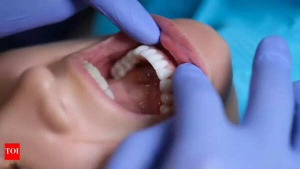Microplastics, ubiquitous in our environment, have now been detected in human reproductive fluids, raising questions about potential impacts on fertility and reproductive health. These findings were presented at the 41st Annual Meeting of the European Society of Human Reproduction and Embryology (ESHRE).
Microplastics are defined as plastic particles smaller than 5 millimeters in size. To provide perspective, a human hair is approximately 80,000 nanometers wide. Nanoplastics, an even smaller category, are invisible to the naked eye, measuring less than one-thousandth of a millimeter.
These particles originate from the breakdown of larger plastic waste, including:

Researchers analyzed follicular fluid from 29 women and seminal fluid from 22 men to investigate the presence of microplastics in living tissue. Both fluids play critical roles in conception.
The results revealed the presence of various common microplastic polymers:

Key findings:
Dr. Emilio Gomez-Sanchez, the lead researcher, stated, “Previous studies had already shown that microplastics can be found in various human organs… we were struck by how common they were – found in 69% of the women and 55% of the men we studied.”
The potential effects of microplastics on fertility remain unclear. Animal studies suggest that accumulation in tissues can induce inflammation, free radical formation, DNA damage, cellular senescence, and endocrine disruptions. These effects could potentially impair egg or sperm quality in humans.
Dr. Gomez-Sanchez added that further research, including a larger cohort and detailed lifestyle data, is planned to explore the potential relationship between microplastic presence and reproductive health.

Dr. Gomez-Sanchez advises against alarm, emphasizing that fertility is influenced by numerous factors. However, he suggests sensible steps to reduce microplastic exposure, such as:
Professor Dr. Carlos Calhaz-Jorge, Immediate Past Chair of ESHRE, added that these findings should encourage avoiding the generalized use of plastics in daily life.
Newer articles
Older articles
 Samsung Galaxy A35 5G and A55 5G: Full Pricing and Specs Revealed
Samsung Galaxy A35 5G and A55 5G: Full Pricing and Specs Revealed
 Warning Signs: 5 Clues Your Body May Be Signaling Prediabetes
Warning Signs: 5 Clues Your Body May Be Signaling Prediabetes
 Expert Tips to Help Kids Sharpen Focus and Combat Distractions
Expert Tips to Help Kids Sharpen Focus and Combat Distractions
 SA20 Teams Allowed Up to Six Player Retentions, Enhanced by New RTM Card and Increased Salary Cap for Upcoming Auction
SA20 Teams Allowed Up to Six Player Retentions, Enhanced by New RTM Card and Increased Salary Cap for Upcoming Auction
 Brain's Eye View: Study Shows We See the World 15 Seconds in the Past
OR
The 15-Second Delay: How Your Brain Creates a Seamless, But Delayed, Reality
Brain's Eye View: Study Shows We See the World 15 Seconds in the Past
OR
The 15-Second Delay: How Your Brain Creates a Seamless, But Delayed, Reality
 Cervical Cancer: Don't Ignore These 5 Subtle Warning Signs
Cervical Cancer: Don't Ignore These 5 Subtle Warning Signs
 Science-Backed: 5 Simple Daily Habits for a Healthier Heart
Science-Backed: 5 Simple Daily Habits for a Healthier Heart
 Shimron Hetmyer's Last-Gasp Six Stuns MI New York, Orcas Complete Record MLC Chase
Shimron Hetmyer's Last-Gasp Six Stuns MI New York, Orcas Complete Record MLC Chase
 Oral Cancer: Spotting the Signs, Understanding the Risks, and Why Early Detection is Critical
Oral Cancer: Spotting the Signs, Understanding the Risks, and Why Early Detection is Critical
 Infrequent Bowel Movements: When Is It Time to Worry? A Guide to Healthy Digestion
Infrequent Bowel Movements: When Is It Time to Worry? A Guide to Healthy Digestion